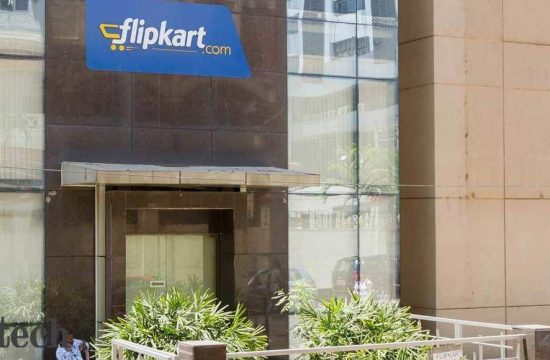
Google is delaying employees’ return to offices to September 1, and will expect employees to report to work in-person for at least three days a week thereafter, according to an email from CEO Sundar Pichai.
The email, which was viewed by CNBC and previously reported by The New York Times, included a link to a FAQ that detailed further expectations for office returns, including that it expects workers to “live within commuting distance” of offices.
“When we closed most of our offices back in March, we didn’t know what course the pandemic would take,” Pichai said in the email to employees Sunday night. “We’ve adapted. We’ve kept innovating. And with new vaccines on the horizon, thanks to the incredible ingenuity of our medical and scientific community, a return to normal is now in sight.”
Pichai’s note represents a delay in office returns and Google’s most detailed plan yet on returning its workforce of more than 130,000-plus employees amid the ongoing pandemic. It wasn’t immediately clear how much of the new plans apply to Google’s contractors or Alphabet‘s other companies.
Hybrid return plans
In July, Google became the first major company to announce it would allow employees the option to work from home through mid-2021, an extension of its prior timeline. In September, Google said it began working on a “hybrid” work model, as most employees said they wanted to come back to the office at some point, but not full-time.
Other competitive tech companies, such as Twitter and Facebook, have said employees can work remotely “forever” or over the next decade, allowing employees to move to other regions if they wanted to.
Google employees had hoped for similar flexibility. But the Dec. 14 memo suggests Google will have stricter requirements than these competitors.
Employees in regions that aren’t at high risk levels will be expected to spend a minimum of three days in the office and two days at home or wherever they work best, Pichai’s email states. They’ll also have the option to book spaces for collaboration for up to a dozen people and outdoor spaces for larger team gatherings. It will also have “reservable” desks for employees who want to work in a quiet space, Pichai’s note states.
The pilot won’t apply to everyone. Pichai noted flexibility may not apply to employees in customer-facing roles “that spend lots of time with clients,” those who need to be on-site in data centers or labs, or those who depend on specialized equipment to work.
Pichai’s email instructs employees to read the full FAQ, which is a lengthy website that has more details about the office returns. In it, the company says employees will need to return to their assigned office, adding that it believes teams work best when “anchored by shared projects,” according to a company Q&A viewed by CNBC.
“You will need to work from your assigned Google office and will be expected to live in commuting distance of your assigned offices,” the company’s answer went on. “We are actively investing in our hub strategy to create more roles — and options — in global offices over time.”
Pichai’s note says the company will be creating in-office presentation booths “designed to send professional-quality broadcasts to large, distributed audiences.” It will also be improving its Meet and Workspace products to “better bridge the gap between colleagues working from the office and those working from home.”
“In-office collaboration will be just as important to Google’s future as it’s been to our past,” Pichai stated in Sunday’s email. “The unpredictability still ahead for many regions creates some interesting challenges.”
Google did not respond immediately to requests for comment on Pichai’s memo.
Read the full memo here:
Hi Googlers,
When we closed most of our offices back in March, we didn’t know what course the pandemic would take. The last few months have been especially difficult with the virus surging in many parts of the world. I know some of us are experiencing personal hardships and missing loved ones who’d normally surround us at this time of year. And many of us are leaning on our fellow Googlers more than ever.
The good news is that over the last nine months we’ve learned how to work better virtually. We’ve adapted. We’ve kept innovating. And with new vaccines on the horizon, thanks to the incredible ingenuity of our medical and scientific community, a return to normal is now in sight. So the question that I know is on your minds is: what’s next?
First, we’ll continue to face variability in many areas of the world before life returns to normal. Our goal is to give Googlers everywhere the option to return as soon as local conditions allow, and it’s encouraging to see that in some parts of APAC and EMEA, Googlers are already returning to the office. Other regions are not as far along, so to help these Googlers deal with the uncertainty still ahead, we’ll be extending our voluntary work-from-home option to September 1. That means if your role allows you to work from home until July 2021, you can now do so until the beginning of September 2021.
Second, we believe that in-office collaboration will be just as important to Google’s future as it’s been to our past. The unpredictability still ahead for many regions creates some interesting challenges and opportunities for us as we start to bring Googlers back to the office. We’re going to lean into them and experiment with a series of pilots designs to improve productivity, collaboration, and overall well being. Here’s what you can expect to see in 2021:
- Flexible work week pilot: To remove the friction of five-day-a-week commutes, we will pilot a hybrid model in which teams come together for “collaboration days” in the office and spend the other days doing focused work for home or the office. In sites that have reached Level 2 on the risk assessment curve, we’ll offer a 3/2 work week — a minimum of three days in the office and two at home (or wherever you work best). This pilot won’t make sense for every role or every team — particularly Googlers in customer-facing roles spending lots of time with clients, employees who need to be on-site in data centers or labs, or those who. Depend on specialized equipment to do their work — so please read the full FAQ and expect further guidance in 2021 from your product or function lead.
- Flexible office design: In offices that have reached levels 2, 3 and 4 on the risk assessment curves, you’ll see new options, such as bookable collaboration spaces for up to a dozen people and outdoor spaces for large team gatherings. We’ll also have reservable desks for Googlers who want to dod individual work in a quiet space (which, as we’ve learned, is not always possible at home).
- New collaboration technology: We’ll keep iterating on our tools and spaces to ensure collaboration equity between Googlers who are working from home and Googlers who are sitting together in the office. For example, we’re creating in-office presentation booths designed to send professional-quality broadcasts to large, distributed audiences. We’re also improving products like Meet and workspace to better bridge the gap between colleagues working from the office and those working from home.
Ultimately, we are testing a hypothesis that a flexible work model will lead to greater productivity, collaboration and well being. Those goals have always been at the core of Google’s workplace philosophy and will stay front and center for us as we plan for the future. No company at our scale has ever created a fully hybrid workforce model — though a few are starting to test it — so it will be interesting to try. We’ll approach these pilots with a spirit of innovation and an open mind, and do rigorous measurement along the way to help us learn and adapt.
I’m excited about the opportunity to reimagine our workplace together and am sure you’ll have many questions. We’ll continue the discussion in future forums and follow up in early 2021 with more detail.
– Sundar
Watch now: Coronavirus may forever change how Big Tech works






